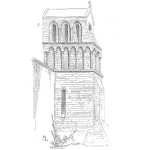
Written with assistance from Ben Karel of Fusion Engineering Plastics
Pty Ltd. Unit 1, 7 Dobra Rd, Yangebup WA ph (08) 9494 1004
Abstract
Welding can join thermoplastic parts together. It can be by melting the surfaces and pressing them together or by extrusion welding with a filler rod.
Several methods of welding are available. Proper manual techniques are critical to success as is the pressure testing of pressure parts.
Keywords: electro-fusion, butt welding, electro-socket welding, hot air gun, melt temperature. [Read more…]














 Ask a question or send along a comment.
Please login to view and use the contact form.
Ask a question or send along a comment.
Please login to view and use the contact form.